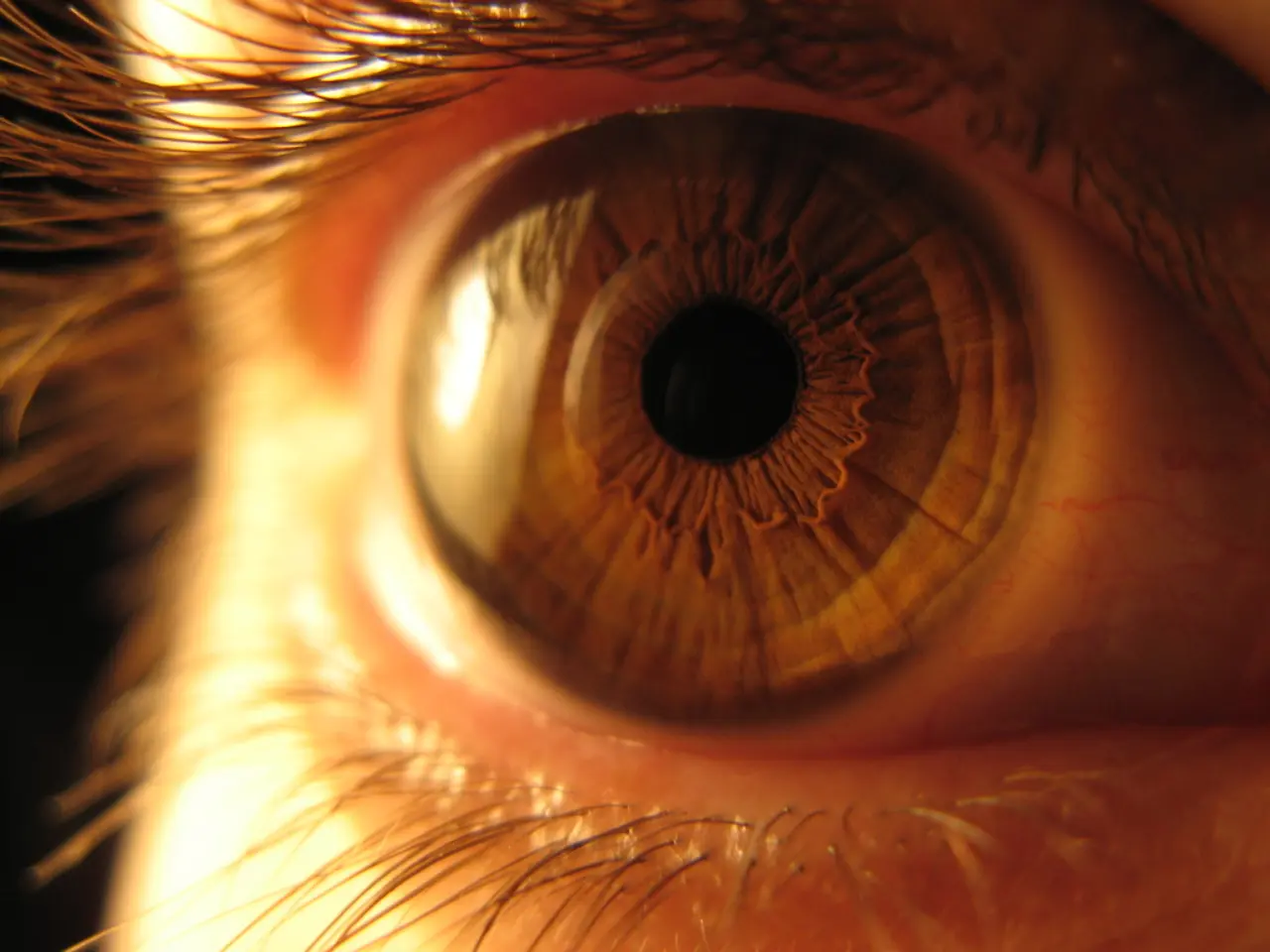Swelling around the eyes: Images, reasons, and remedies
Periorbital edema, commonly known as swelling around the eyes, can be a concerning health condition for many. This swelling can occur in one or both eyes and is not the same as the natural bags under the eyes that come with aging. Here's a breakdown of the common causes, symptoms, and treatments for periorbital edema.
### Common Causes
Periorbital edema can stem from various sources, including allergic reactions, aging, infections, eye injuries, thyroid diseases, and lifestyle factors. Allergies can trigger inflammation and fluid accumulation around the eyes, while natural aging can lead to weakened tissues and fluid retention. Acute infections, such as periorbital (preseptal) or orbital cellulitis, can cause redness and swelling of the eyelids and surrounding tissue. Conjunctivitis, or pinkeye, can also cause periorbital edema due to inflammation of the thin membrane covering the eye. Lifestyle factors, including a lack of regular sleep, high-salt diet, excessive alcohol consumption, and dehydration, can contribute to periorbital edema. Eye injuries, insect bites, insect allergies, and immune system weaknesses can increase susceptibility to infections leading to swelling.
### Symptoms
Symptoms associated with periorbital edema include mild to severe inflammation, double or blurred vision, redness, swelling, the white of the eye appearing inflamed, excessive tearing, eye appearing bruised, inflammation pushing the eyelids back, sensitivity to light, pain around the eye or when moving the eye, itchiness around the eye. In severe cases, such as anaphylactic shock or orbital cellulitis, additional symptoms like fever, feeling unwell, nausea, vomiting, swollen lymph nodes may be present.
### Treatments
Treatment depends on the underlying cause—ranging from antihistamines and lifestyle changes for allergies and aging, to antibiotics and possible surgery for infections. For allergic reactions, antihistamines, cool compresses, and avoidance of known allergens are effective. Lifestyle modifications like improving diet, hydration, sleep quality, and using hypoallergenic moisturizers may help with aging-related edema. For acute infections, prompt antibiotic therapy is crucial, which can be oral, injected, or intravenous depending on severity. Hospital admission may be necessary for intravenous antibiotics and close monitoring, especially for orbital cellulitis. Surgery may be required to drain abscesses if infection worsens or does not improve.
### Preventive Measures
Maintaining good hygiene and proper wound care, especially around the eyes, treating skin or respiratory infections promptly to reduce the risk of bacterial spread leading to cellulitis, managing allergies and avoiding triggers, and maintaining healthy lifestyle habits such as balanced diet, proper hydration, and adequate sleep can help prevent periorbital edema.
In summary, prompt medical evaluation is critical for infections to prevent complications and ensure full recovery. Home remedies or over-the-counter treatments may help reduce symptoms of periorbital edema, but a doctor should be consulted if the condition persists or if there is a concern about a serious underlying cause.
- Allergies and inflammation can cause periorbital edema, a condition characterized by swelling around the eyes, due to the triggering of fluid accumulation.
- Another cause of periorbital edema is natural aging, which can lead to weakened tissues and fluid retention.
- Acute infections, such as periorbital or orbital cellulitis, can cause redness and swelling of the eyelids and surrounding tissue, leading to periorbital edema.
- Conjunctivitis, or pinkeye, can also result in periorbital edema due to inflammation of the thin membrane covering the eye.
- Lifestyle factors, including a lack of regular sleep, high-salt diet, excessive alcohol consumption, and dehydration, can contribute to periorbital edema.
- Eye injuries, insect bites, insect allergies, and immune system weaknesses can increase susceptibility to infections leading to swelling and periorbital edema.
- The symptoms associated with periorbital edema include mild to severe inflammation, double or blurred vision, redness, swelling, the white of the eye appearing inflamed, excessive tearing, eye appearing bruised, inflammation pushing the eyelids back, sensitivity to light, pain around the eye or when moving the eye, itchiness around the eye.
- In severe cases, such as anaphylactic shock or orbital cellulitis, additional symptoms like fever, feeling unwell, nausea, vomiting, swollen lymph nodes may be present.
- Treatment depends on the underlying cause, ranging from antihistamines and lifestyle changes for allergies and aging, to antibiotics and possible surgery for infections.
- Preventive measures include maintaining good hygiene and proper wound care, treating skin or respiratory infections promptly to reduce the risk of bacterial spread leading to cellulitis, managing allergies and avoiding triggers, and maintaining healthy lifestyle habits such as balanced diet, proper hydration, and adequate sleep.
- For mental health conditions like depression, multiple sclerosis, bipolar, diabetes (type 1 or type 2), crohns, arthritis, psoriatic, lactose intolerance, anaphylaxis, COPD, or other medical conditions that can affect eye health, it is crucial to consult a healthcare professional for proper management and treatment to prevent potential complications in eye-health, health-and-wellness, and mental-health, as part of a comprehensive approach to holistic care.




